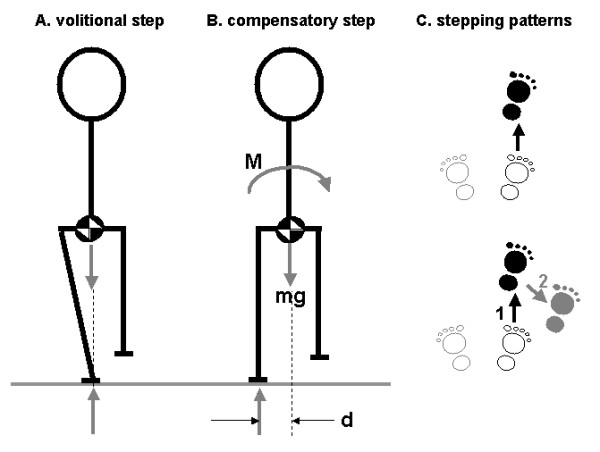Figure 1.

Control of lateral stability during forward and backward steps. Volitional steps are preceded by an anticipatory postural adjustment (APA) that acts to preserve lateral stability during the step by propelling the centre of mass toward the stance leg prior to lifting of the swing foot, thereby countering the tendency of the body to fall toward the unsupported side during the execution of the step (panel A). Conversely, APAs are typically absent or severely truncated during compensatory steps; as a result, the centre of mass falls toward the unsupported side of the body during the swing phase [the body weight (mg) creates a destabilising moment of force M = mg * d (panel B)]. In older adults, inability to arrest the lateral motion of the centre of mass during the landing phase of the initial forward or backward step often leads to one or more 'extra' steps in the lateral direction, whereas young adults typically respond with a single step (panel C).
